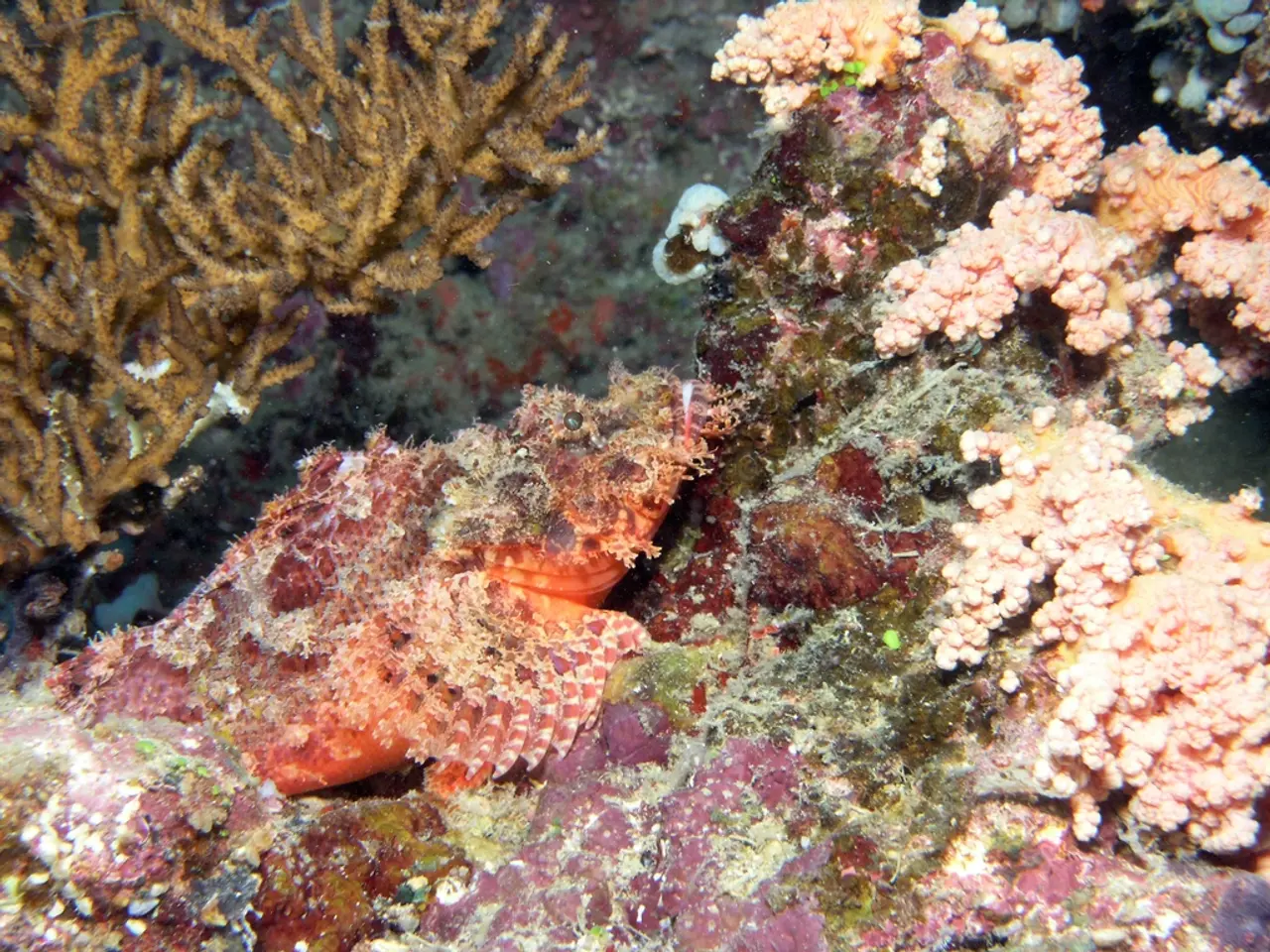Thailand's dugongs endure hardships due to seagrass decline
In the crystal-clear waters of Thailand's coastal provinces, a silent crisis is unfolding. The seagrass meadows, vital habitats for the endangered dugong population, are experiencing a massive die-off, leaving these gentle marine mammals struggling to find food.
The exact cause of the seagrass die-off remains a mystery, but it's clear that coastal development and pollution play a significant role. Laddawan Sangsawang, who oversees small-scale seagrass restoration for the Department of Marine and Coastal Resources (DMCR), warns that previous restoration efforts have faced challenges due to issues with species selection, proper techniques, and seasonal dynamics.
Phuket is currently the only place with remaining seagrass meadows, but it may not be sustainable for the number of dugongs that have migrated there. The DMCR has drafted a four-part emergency response plan to save Thailand's remaining dugong population, including identifying remaining numbers, determining new migration routes, restoring seagrass habitats, and considering temporary feeding shelters.
The decline of seagrass in Thailand has had devastating consequences for the dugong population. Many of the dugongs that washed out of the Andaman Sea between January 2019 and November 2024 were emaciated. According to a DMCR survey, Thailand had 273 dugongs in its surrounding waters in 2022. Based on recorded deaths alone, Thailand may have since lost around one-third of that population.
Stranding hotspots for dugong deaths are concentrated in Trang province, especially around Mook and Libong islands. The seagrass beds in Trang province's Libong Archipelago Wildlife Reserve and Hat Chao Mai National Park have experienced a massive die-off by 2024. In 2023, there were 40 dugong deaths, and in 2024, the count was 45, making a total of 85 dugong deaths in those two years.
Scientists emphasize that reversing the loss of dugong habitat is crucial for the species' survival in Thailand's waters. Piyarat Khumraksa, a marine veterinarian based at the Marine and Coastal Resources Research Centre, has noticed problems with seagrass meadows in southern Thailand's coastal provinces for five years, but it became critical in 2023 and 2024.
The DMCR has taken steps to mitigate the crisis. In November 2024, they began feeding leafy vegetables to dugongs around Phuket as a stopgap until their seagrass can be restored. However, without a deeper understanding of the causes behind the seagrass die-off, restoration efforts may fall short of providing a viable future for the dugong species.
The dugong, categorized as vulnerable on The International Union for Conservation of Nature's Red List of Threatened Species, faces numerous challenges in Thailand's waters. Climate oscillations, apart from El Niño/La Niña, may have contributed to the recent low tides in Thailand, further exacerbating the seagrass die-off. Only 12% of dugong deaths could be attributed to direct anthropogenic factors such as fishing gear entanglement or boat collisions.
As the crisis unfolds, efforts to understand and reverse the seagrass die-off are crucial for the survival of Thailand's dugong population. The future of these gentle marine mammals depends on it.
Read also:
- Understanding Hemorrhagic Gastroenteritis: Key Facts
- Stopping Osteoporosis Treatment: Timeline Considerations
- Tobacco industry's suggested changes on a legislative modification are disregarded by health journalists
- Expanded Community Health Involvement by CK Birla Hospitals, Jaipur, Maintained Through Consistent Outreach Programs Across Rajasthan








